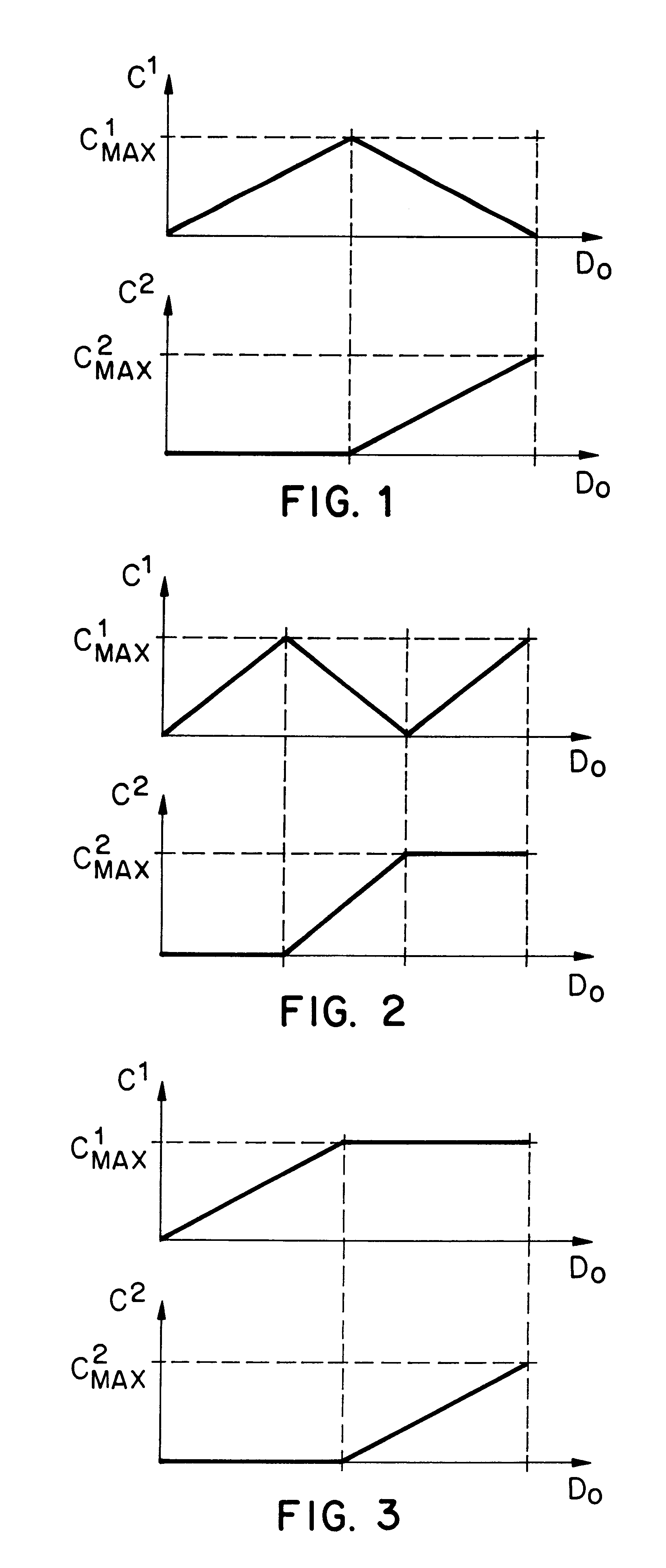Method for stable electro (stato) graphic reproduction of a continuous tone image
a technology of electrostato and image, applied in the field of stable electrostato graphic reproduction of continuous tone image, can solve the problems of limiting the real resolution of printed image, affecting the use of these very convenient printers, and the inability to reproduce the way the dot spreads and penetrates the substrate, etc., to achieve better monochrome low density printing
- Summary
- Abstract
- Description
- Claims
- Application Information
AI Technical Summary
Benefits of technology
Problems solved by technology
Method used
Image
Examples
Embodiment Construction
According to FIG. 3, in order to achieve a fine tone scale, indicated as D.sub.0 in abscissa, the amount (e.g. C.sup.1) of deposited toner of at least one toner composition is varied in a predefined, preferentially monotonous manner, as the optical density of the result D.sub.0 increases. In order to save toner, it is also possible that the amount of deposited toner is not a monotonous function across the complete tone-scale. This is clarified by FIG. 1. Although the noise level may be reduced by superposition of several types of toner, it is beneficial to restrict the total amount of toner per microdot, preferably to 2 mg / cm.sup.2. This is especially true if too high concentrations of toner particles tend to crack if the page or substrate is bent. Large toner concentrations may also cause inconvenient embossed type. FIGS. 2 and 4 show that other toner amounts as a function of the required optical density D.sub.0 are achievable. Boundary points, where monotonicity is disrupted, are ...
PUM
 Login to View More
Login to View More Abstract
Description
Claims
Application Information
 Login to View More
Login to View More - R&D
- Intellectual Property
- Life Sciences
- Materials
- Tech Scout
- Unparalleled Data Quality
- Higher Quality Content
- 60% Fewer Hallucinations
Browse by: Latest US Patents, China's latest patents, Technical Efficacy Thesaurus, Application Domain, Technology Topic, Popular Technical Reports.
© 2025 PatSnap. All rights reserved.Legal|Privacy policy|Modern Slavery Act Transparency Statement|Sitemap|About US| Contact US: help@patsnap.com



